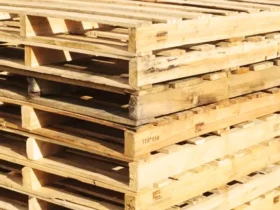Wrought iron fences are the most popular choice for homes and yards. The natural resistance of the fence is one of these elements. Due to its durability and resistance to bending, strain, and denting, the owner is concerned that the 100-year fence won’t need repairs very soon.
Despite the system’s robustness, accidents nevertheless occur. Your wrought iron fences will likely rust and have dents over time. If this happens to you, be sure the fence installation firm has the resources to do the required repairs in a timely way. You may wish to find out more about the nature and potential severity of the injury. We shall go further into this subject and look at the development of the wrought iron fence in the paragraphs that follow.
A Synopsis of the Wrought Iron Fence’s History
The first wrought iron fence was made possible by the development of blast furnaces in the fourteenth century. These railings were fairly straightforward. The rails were employed to increase security in the hallway or stairwell that was enclosed. These early architectural forms also include ornamentation and church architecture. Wrought iron continued to be widely used far into the late nineteenth century, even after steel had been around for a while. This operating system was created over the course of more than 200 years. Before the second half of the 18th century, when new manufacturing techniques made cast iron railings practical, they were seldom used.
The Adams brothers were crucial in its broad acceptance because they discovered how quickly and readily cast iron could be molded into conventional designs. They realized that metal could be quickly and easily shaped into typical shapes. Prior to 1850, homeowners almost rarely used cast iron as an outside decorative element of their homes. On low stone boundary walls, iron was often used to build balustrades, parapets, and railings. Additionally, it was used as a finishing touch to the porches, bay windows, and roofs of certain middle-class houses. Cast iron was often used in the construction of Victorian gates, railings, panels, and the decorative elements that such structures included as their use increased during the Victorian era.
Throughout the Victorian era, the construction of homes that were outstanding in terms of size, architecture, and aesthetic appeal became the standard. The mosaic tile was often used to accent garden components like gates, fences, and paths in keeping with the beauty of this style. We did this to be able to brag about our success and achievements.
Wrought iron and cast iron are the two types of iron. Many British terraced homes, especially the older ones, still include Victorian gates and railings. These gates and railings served as a barrier between private land and public walkways in order to increase safety.
Traditional ironwork is often constructed to match the architectural design of the property on which it is used, whether as ornamentation, fences, railings, or terrace gates. Regardless of how the ironwork is meant to be used, this is true. The artisans of the “gracious age” who created the Victorian style took their time to produce works of art that would last for a long time. Cast iron gates and railings with elaborate carvings were thus extremely widespread at the time. Even the wealthiest Victorian estates had access to catalogs stocked with mass-produced cast iron fences and gates by the late 1800s. These might be gates or walls.
Weather Effects on Fencing
Even though your wrought iron fence was built to resist all weather conditions, it might still sustain damage. The situation that threatens the fence’s aesthetic value the most happens much too often. Snow, ice, and other types of precipitation may damage your fence. This might develop gradually. Another weather risk that might endanger the safety of the barrier is strong winds.
Despite your best efforts, there are certain things that you just cannot prevent from happening. By periodically inspecting your fence, especially after storms, and fixing any damage you see, you may halt the rusting process.
Destruction Might Result From Corrosion
As with other metals, iron and other metal fences are particularly prone to corrosion. For homeowners who have only ever had vinyl or wood fences on their homes, this is a common source of frustration. As soon as it is possible, corrosion issues need to be addressed and fixed.
By routinely checking it for early indications of rust, you may be able to extend the period that your fence fulfills its original purpose. Any flaws that could be present in the object in question can be eliminated using sandpaper and a wire brush. Following the removal of the rust, at least one or two coats of rust-resistant paint must be applied. Wearing a mask when painting or sanding might prevent you from breathing in any potentially dangerous particles.
Ask the firm that constructed your fence if they can send someone out to mend it if you see any large rust patches. If your fence has rust spots,
Ask the installer whether a repair staff can be deployed if the problems persist.
Filling Issues With Your Fence
You must use considerable caution if you want to hang something or lean it against your fence. The device’s design makes it impossible to use to move a significant quantity of weight. The fencepost may ultimately bend or even break due to the weight it must support. This is particularly true when smaller wrought iron fence posts are used. It is impossible to build a wrought iron fence that can sustain higher weights over time.
You shouldn’t make this choice if you’re not convinced that adding anything to your fence won’t make it much heavier than it already is. For instance, Christmas lights could be better than massive poinsettia wreaths strung between fence posts. If you have any concerns about whether the fence can securely sustain a certain amount of weight, get in touch with the qualified expert who constructed it.
Accidents Happen to Everyone
Installing high visibility lights or reflector sticks next to your fence may assist in lessening the possibility of a traffic accident happening on your property if it is next to a busy road or a curve in the road. You should check with your homeowner’s insurance carrier to see whether you are responsible for the repairs if an automobile destroys your fence.
Your fence is quite likely to suffer serious damage if something large, like a tree limb or a car, crashes into it. Please get in touch with the business that erected the fence right once if you see anything that might endanger its integrity.
Conclusion
Regular maintenance and inspection are necessary for wrought iron fences to solve any potential problems. You invested a significant amount of money on your fence, so you want to ensure that it remains in outstanding condition for as long as possible.
Make sure to find out what upkeep procedures the fence installation company suggests carrying out to keep the fence in excellent shape. For advice on fence maintenance, if you’ve bought a house that already has one, get in touch with a trustworthy business like Butte Fence.
We provide a range of design options for the wrought iron fence. Please click here to find out more if you’re interested in making a purchase or have any queries.





